Raspberry Pi 4 8gb Fan Connection
Final year, I wrote a web log post titled The Raspberry Pi 4 needs a fan.
And in a video to get along with that post, I detailed the procedure of drilling out a pigsty in the tiptop of the official Pi 4 example and installing a 5v fan inside.
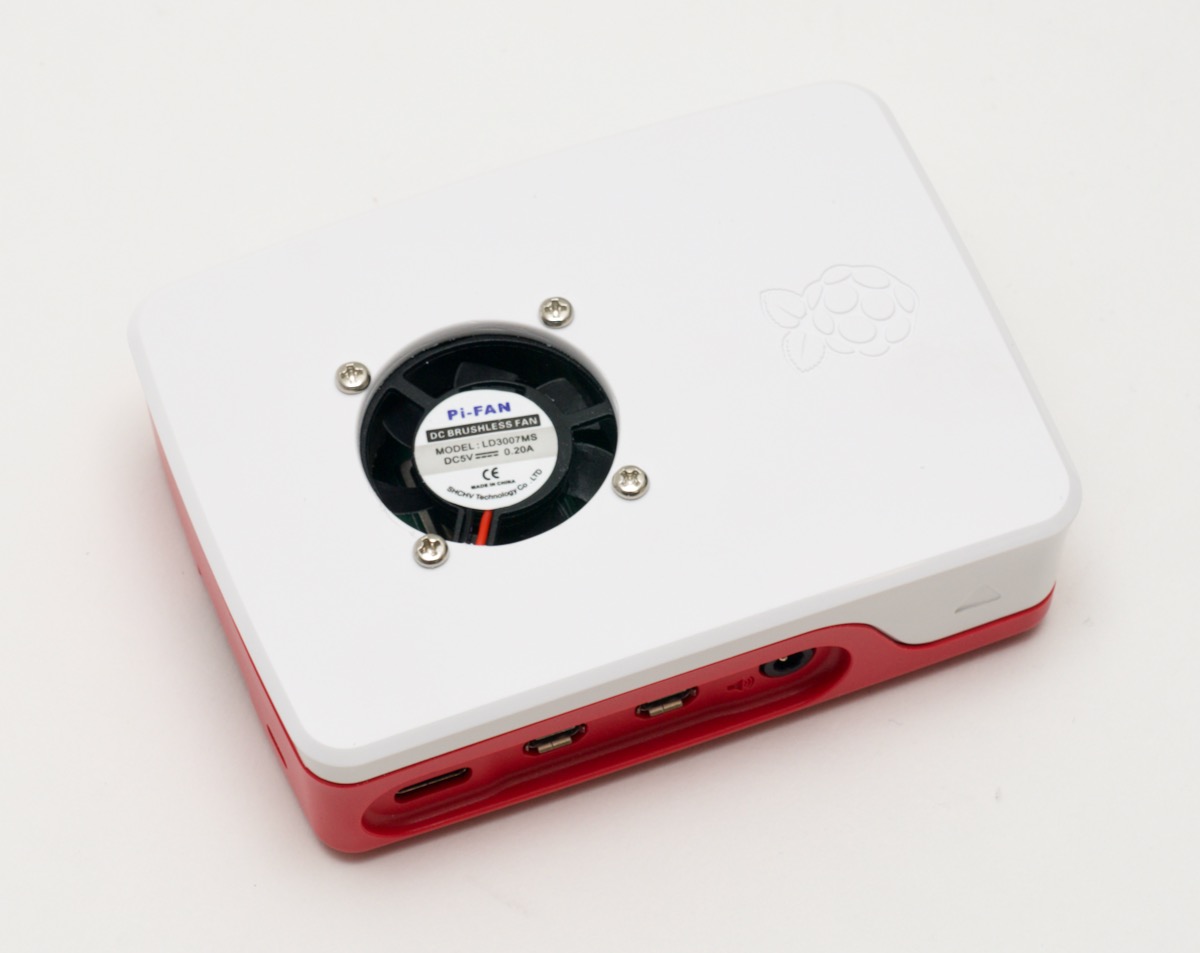
Only that solution wasn't nifty. The fan was a footling loud and annoying, and would stay on constantly. And who wants to damage the nice-looking Pi Instance by putting a hole right in the top?
Well, the folks over at Raspberry Pi Trading—in this detail example, engineer Gordon Hollingworth, equally detailed in his postal service about Designing the Case Fan—must agree with me that the Pi iv case needs a fan, because they merely started selling the five dollar Pi Example Fan.
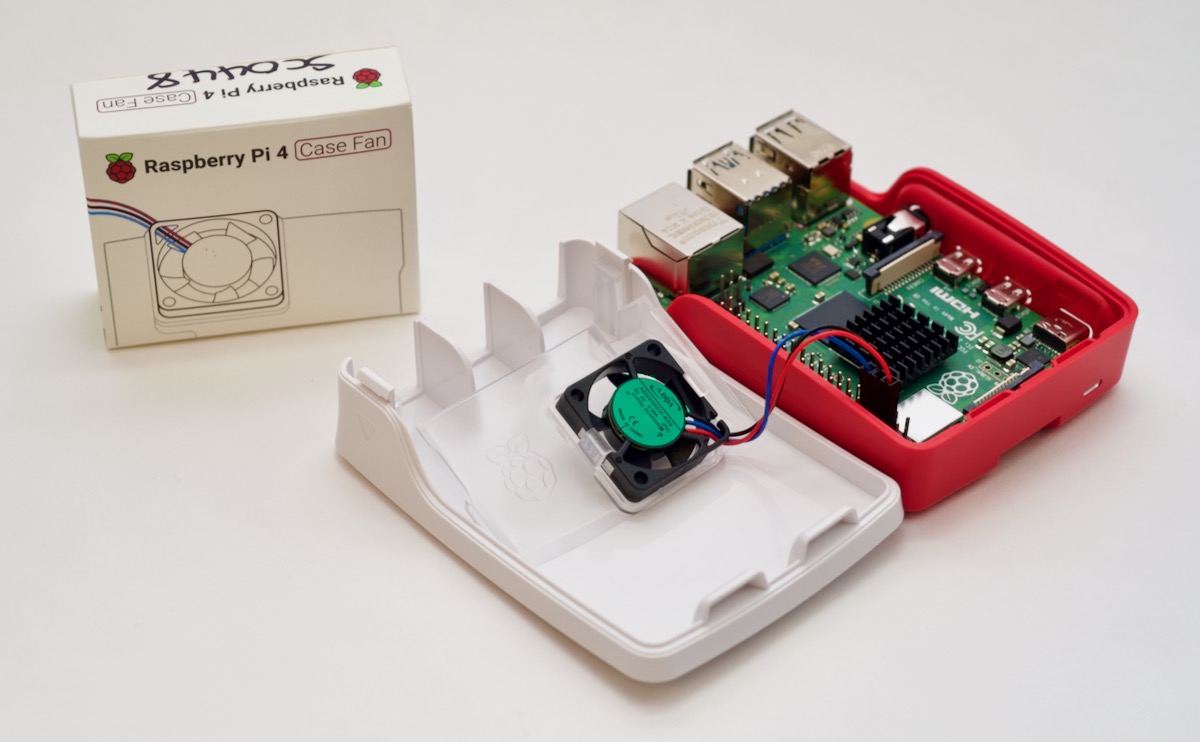
The fact that the Pi 400 I tore down last calendar month has a massive estrus sink congenital in ways the Pi engineers know how of import information technology is to misemploy heat from the Pi'southward principal processor.
Video: Check out the video that goes along with this blog mail:
Raspberry Pi Case Fan - How Loud is it?!
Fan Specs
Some people are interested in knowing exactly what fan is used, and how big it is, so here'southward an up-close film:
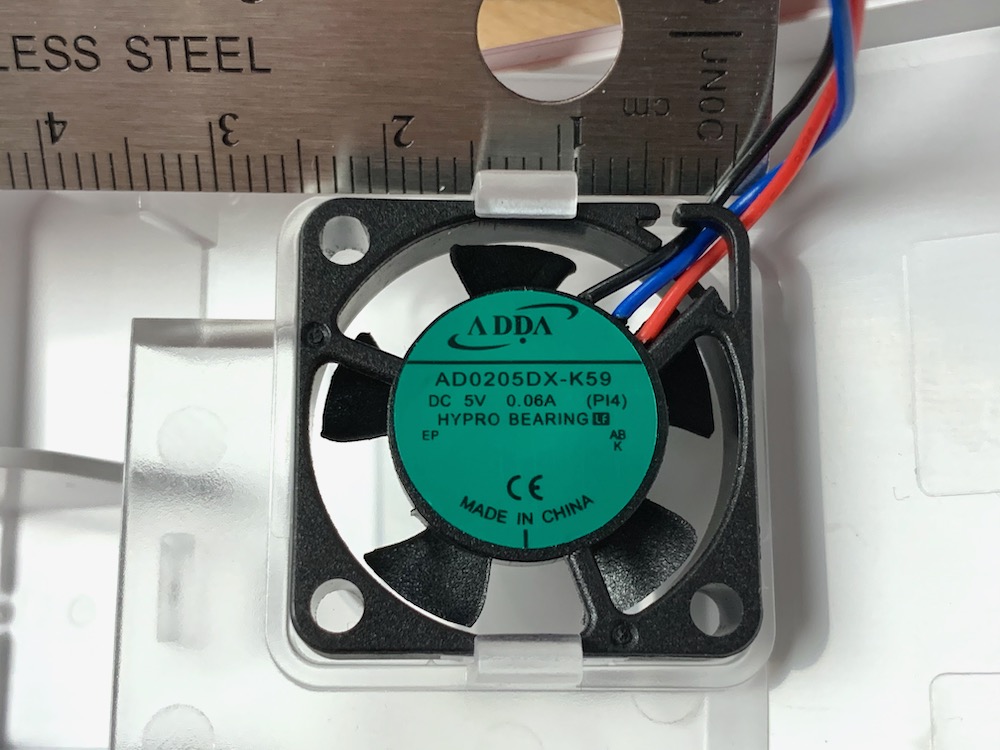
It looks like this is the AD0205MX-K50 two.5cm 2506 25x25x6mm DC5V 0.13A fan, and from AliExpress, at least, it costs ~$four. Information technology is the 7000 rpm, which according to the spec sheet is the quietest version of that fan model.
Installing the fan
I love how the box has the installation instructions right on the exterior. Regardless of how well the fan works, the box designer deserves a shout-out:
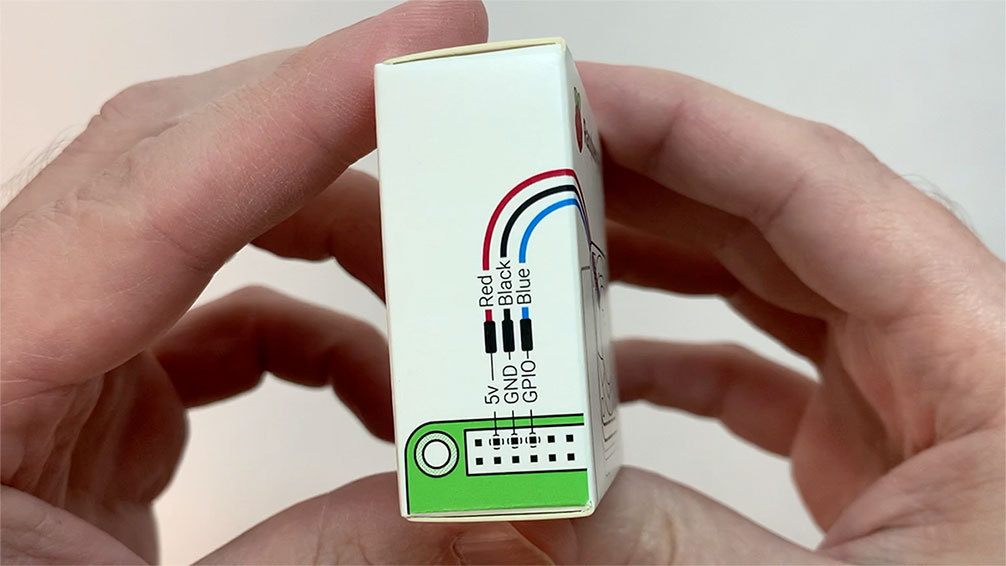
To install the fan, pop off the top of the Pi case, line upwards the Example fan inside the top of the example, and push it in until the tabs click into place. Plug the cerise, black, and blue wires into the Pi's GPIO header like it shows on the side of the box.
The Case Fan also includes a little heatsink you tin stick on superlative of the system on a chip. If you don't, the Case Fan alone however keeps the Pi from throttling, only spreading the heat using this rut sink makes the fan's chore a little easier, so I stuck mine on.
Pop the top embrace on the case, and the Pi is skillful to become!
The fan intake and exhaust are the gaps around the USB and network jacks, and the gap effectually the microSD card slot and the other ports on the side of the Pi 4, respectively. Read Gordon Hollingworth'south explanation about why this was ultimately chosen. It would definitely exist better to have bodily vents, but the airflow is acceptable using this technique to proceed the Pi cool using the fan.
Hither'southward a preview of what it looks similar on a thermal camera. You can see it still gets slightly warm on top, even with the fan going:
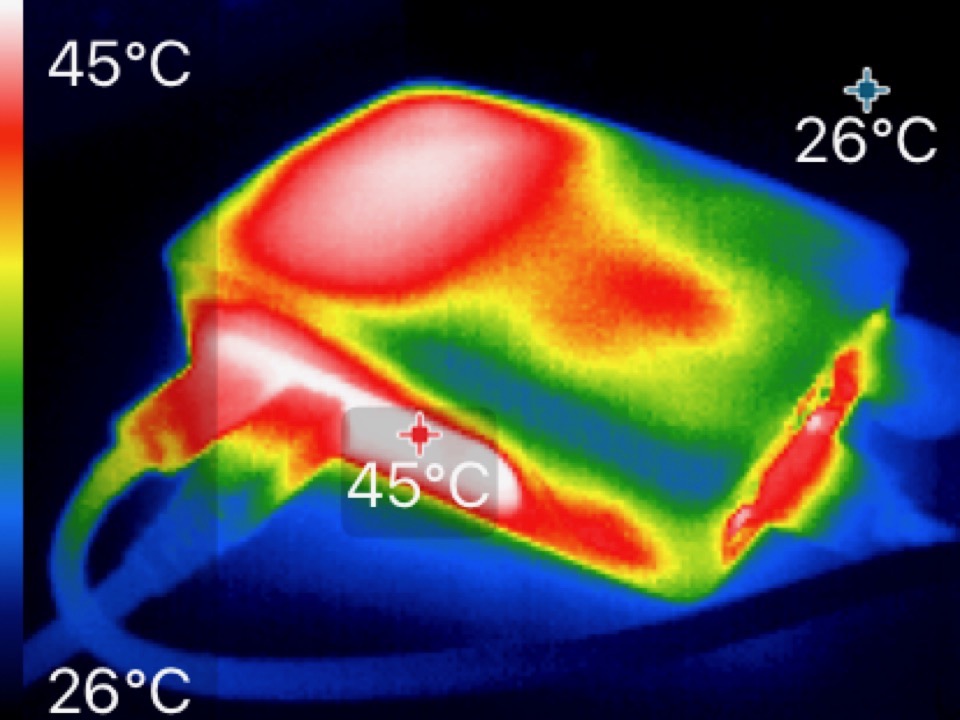
Fan software controls
To support the hardware, a new Pi OS update released on December ii that made information technology easy to configure options for the Fan, like which GPIO port the blue wire is plugged into, or what temperature the Pi should attain before the fan is powered upwards.
I enabled the fan in the Pi Configuration utility, and left the defaults, which are pin 14 and eighty degrees celsius:
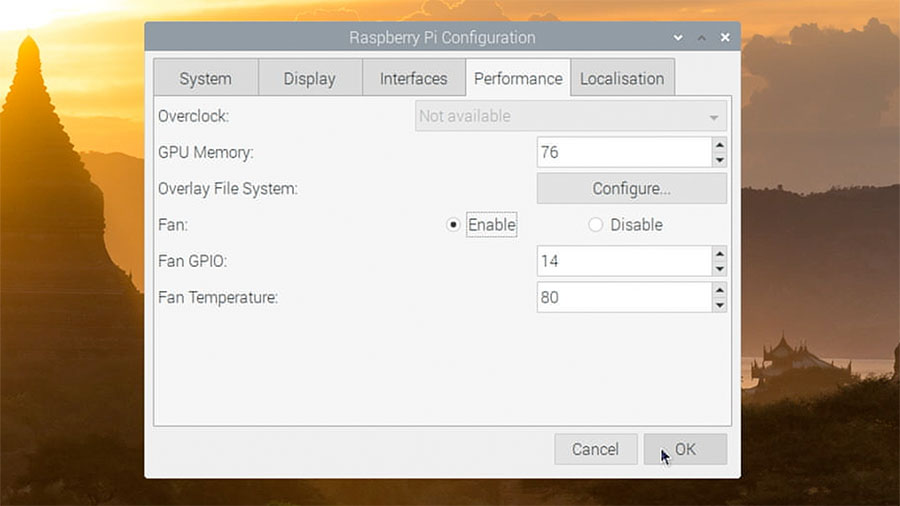
If you want to configure the fan settings in the boot config.txt file, the settings are:
dtoverlay=gpio-fan,gpiopin=14,temp=80000 Testing the fan
Here's a graph of the Pi running with the fan prepare to run at 80 degrees during a twenty infinitesimal stress test using the Pi CPU stress script I maintain on GitHub.
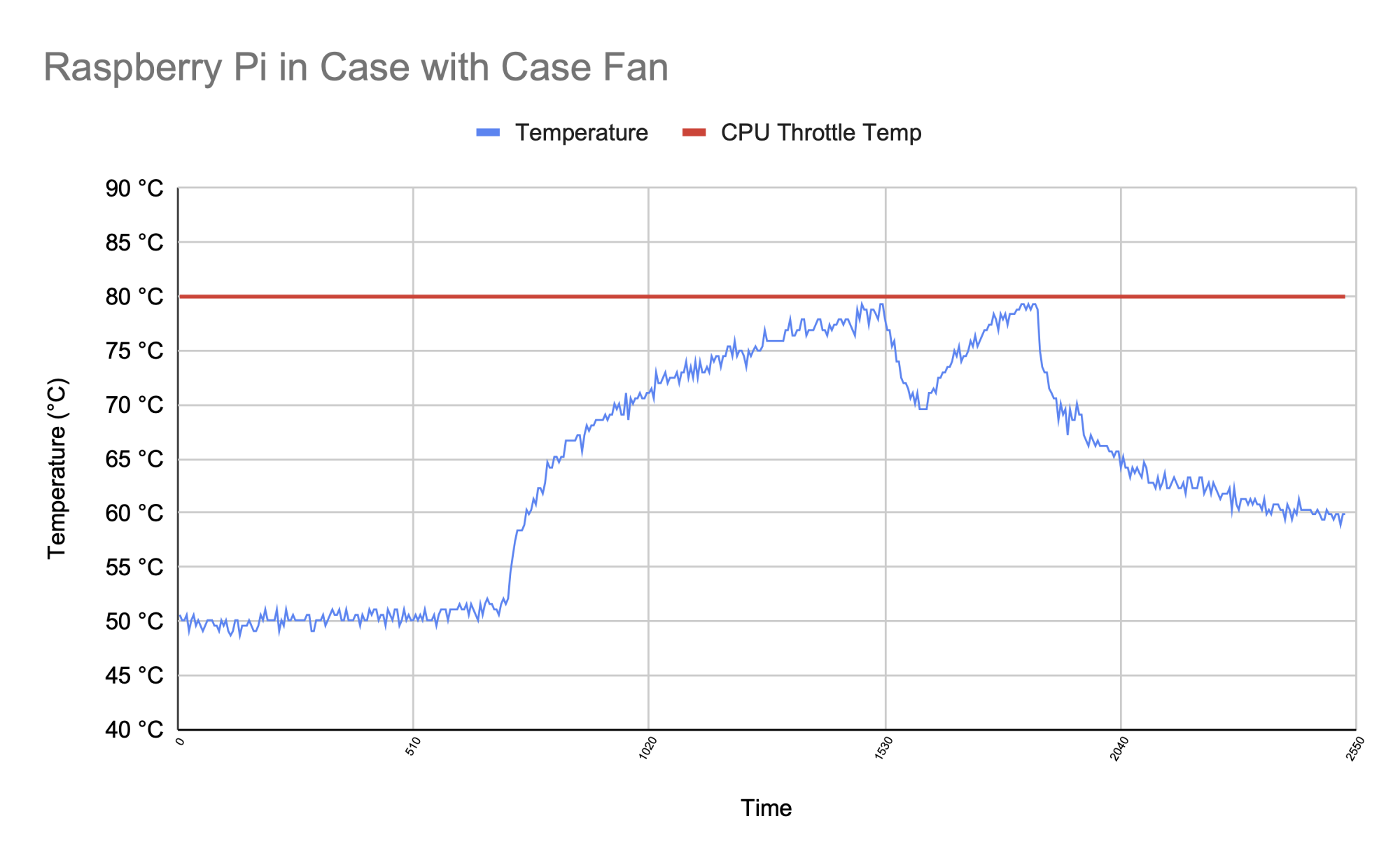
And wouldn't you lot know, the fan works!
You can see the bespeak where the fan kicked in and kept the Pi from throttling before it reached 80°C. At no point when I had the fan installed did the Pi throttle its CPU.
I ran the same exam without the case fan installed, and the Pi started throttling effectually 9 minutes into the CPU stress test:
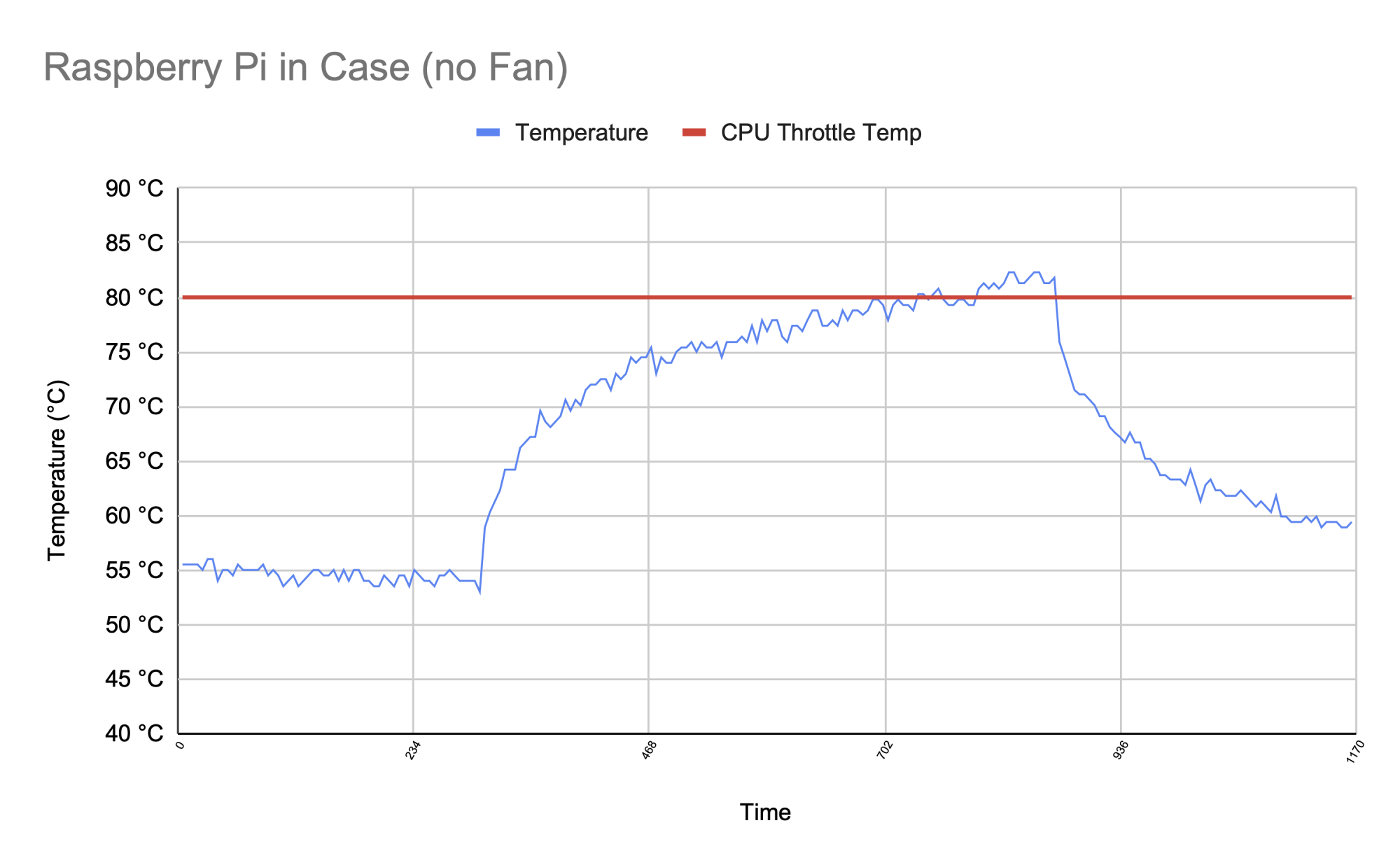
In both cases, the Pi will bear similarly until the set temperature is reached when the Example Fan turns on.
I could compare the Case Fan to other Pi cooling solutions I tested earlier, just I don't remember that's likewise important here. The Instance Fan is built to do one thing: go along the Pi 4 from throttling when it's inside the official Pi 4 case. And it does that.
So it's a good improvement, only the most important thing for me, especially since I'm used to the blissful silence of my fanless Flirc cases, is how loud the fan is when it runs, and how often information technology runs.
How loud is the fan?
To test how loud it is, I used the dB Meter app on my iPhone, and put the iPhone a few inches to the left of the Pi in the example:
For those wondering... this is what the Pi four Case Fan sounds similar. #RaspberryPi #CaseFan pic.twitter.com/0seeAhkL9q
— Jeff Geerling (@geerlingguy) Dec 5, 2020
A footling unpleasant, and it has a high pitched whine that reminds of of the sound you become in an unbalanced audio system with a fleck of electric interference.
In the video Raspberry Pi Case Fan - How Loud is it?!, I as well compare that sound to the audio of my 5v 'PiFan' and the blissful silence of a passively-cooled Flirc case.
When yous're dealing with fans that toll less than five dollars, y'all're non going to get some silent noctua-quality fan—you're more worried about controlling the temperature than the noise. But it is something to consider. The smaller the fan, the more likely it has some annoying pitch.
But there is practiced news. If you set the fan to simply come up on at fourscore°C, then it seems to only have to run for 30 to lx seconds every three to v minutes if the Pi is nether constant one hundred percent load.
It cools it downwardly to around 70 degrees, so shuts off until the Pi hits fourscore degrees over again.
It'southward a reliable enough compromise that I'd recommend it to anyone using the official case. But if the Pi Foundation plans on making a similar case for the side by side Raspberry Pi, I hope they consider the thermals in the case pattern itself, and either build a passive estrus sink into the case like the Flirc, or build a fan into the blueprint of the example itself, instead of as an addon.
Decision
If you already utilise the official Pi 4 instance, then for five bucks, the Instance Fan isn't a bad deal. Information technology keeps the Pi from throttling, and only kicks in nether the heaviest loads.
Merely information technology does sound a piddling annoying and makes its presence known.
I'd withal recommend using a different case, like my favorite, the Flirc instance, or finding other artistic ways to mount your Pi iv and then it keeps its cool without a noisy little fan.
Source: https://www.jeffgeerling.com/blog/2020/raspberry-pi-4-has-fan-now-case-fan

0 Response to "Raspberry Pi 4 8gb Fan Connection"
Post a Comment